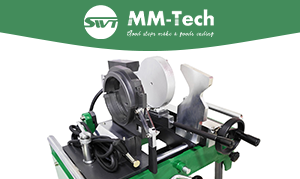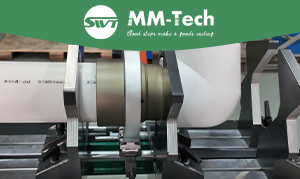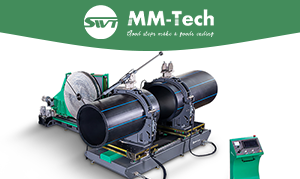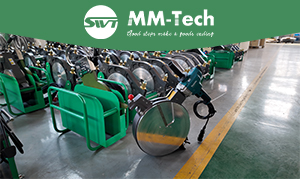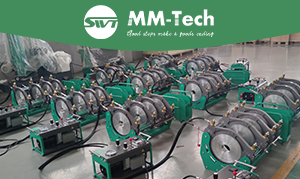HDPE boat market and prospects
With the emergence of advanced welding technologies and the deepening understanding of the properties of high-density polyethylene (HDPE), a large number of new builders have entered the market.
The factors driving this growth include the increasing demand for workboats and recreational crafts, as well as the need for traditional fleets to switch to HDPE vessels—HDPE’s maintenance-free nature, durability, and environmental advantages have attracted numerous fleets.
Currently, the demand for HDPE boats has extended beyond traditional industries; sectors ranging from tourism to environmental research have recognized its value.
This growing demand is a testament to HDPE’s adaptability and performance under various conditions.
HDPE boat applications
HDPE boats are not only ideal for patrols, port operations, surveys, and diving operations, but also widely suitable for scenarios such as fishing, rescue operations, passenger transport, and recreation. Combining strength, safety, and sustainability in marine environments, they can be called the future form of small workboats that are robust, reliable, and ready to tackle various challenges at any time.
Development prospects
HDPE boats boast broad prospects in the field of shipbuilding: although they currently face challenges such as limited public awareness and the need for specialized equipment in manufacturing, they rely on advantages in durability, sustainability, and cost-effectiveness.
Additionally, technological advancements (such as CAD design and precision molding technology) have driven their designs to be more complex and efficient, expanding their application scenarios (from personal recreational boats to specialized industrial vessels).
Coupled with the gradual improvement of public awareness, HDPE is expected to break through existing limitations, further promote the application expansion and innovation in the shipbuilding industry.
It will ultimately lead the arrival of a new era of efficient, environmentally friendly, and high-toughness ships, becoming an important development direction in the future shipbuilding field.
Advantages and disadvantages of HDPE boats
Advantages
Superior Buoyancy and Unsinkability: Polyethylene has a density of only 930-970 kg/m³, which is lighter than water. It is 1/8 the weight of steel and 1/3 the weight of aluminum; even if all compartments are completely flooded with water, the boat will not sink.
High Flexibility and Damage Resistance: The material has elasticity, which can effectively prevent the hull from deforming or cracking, and exhibits outstanding damage resistance in collision scenarios.
Long-lasting Aging Resistance and Extended Service Life: It has excellent aging resistance, with a designed service life of at least 50 years, and the actual service life in practice is even longer.
Corrosion Resistance in All Environments: It is not affected by oxygen, salt, or water, and has strong resistance to chemically corrosive environments, making it suitable for complex scenarios such as marine environments.
High Impact Resistance for Coastal Operations: Combining sturdiness and flexibility, its elastic properties endow the hull with high impact resistance, meeting the needs of coastal operations.
Easy Maintenance and Low Cost: Damaged parts can be quickly repaired locally through a simple welding process, with maintenance difficulty and costs far lower than those of boats made of other materials.
Maintenance-free and Antifouling: The material is antifouling and does not absorb dirt, eliminating the need for antifouling paint application and significantly reducing the daily maintenance costs of the boat.
Environmental Sustainability: Constructed with recyclable materials and featuring long durability, it can reduce carbon footprint, align with modern sustainable development goals, and fulfill environmental responsibilities.
Reduced Wave Impact for Smoother Sailing: It can absorb the impact caused by waves, enabling smooth sailing even in harsh weather. Compared with FRP boats or aluminum boats, the impact of waves on the hull is significantly reduced.
Biological Growth Resistance: It does not rust like steel or rot like wood, and has strong resistance to biological growth such as algae and barnacles, ensuring the hull remains clean and minimizing water resistance.
Disadvantages
Prone to Scratches: Scratches may occur during transportation or assembly. While they have little impact on commercial boats, this is the main reason HDPE is unsuitable for luxury boats.
Limited Color Options: Only black HDPE sheets are UV-treated (containing 3% carbon as a UV stabilizer). Other colors can be used for aesthetic purposes but must not be exposed to direct sunlight.
Size Constraints: HDPE boats are generally not suitable for building vessels over 15 meters in length. Although larger HDPE boats can be constructed, the material is relatively new in the market, with uncertain long-term issues. Vessels that experience continuous hogging and sagging during long-term operation may cause hull expansion, which must be considered when designing larger boats.
Single Application Scope: Due to issues like scratches and limited color options, HDPE is only suitable for workboats and not for luxury yachts.
HDPE boat hull structure and welding process
The manufacturing of HDPE boats follows the general principles of the shipbuilding industry.
In terms of structure, it adopts a combined design of transverse frames, longitudinal hull bottoms, and secondary decks; all components are connected using extrusion welding and butt fusion welding processes.
The periphery is constructed with pipes with a thickness of at least 12.3 mm, which form independent compartments separated by bulkheads.
Even if partial damage occurs, the compartments will not fail entirely, ensuring the hull’s buoyancy and operational safety.
Welding equipment used in building HDPE ships
Engraving Machine: It is used for pre-welding processing of HDPE sheets in HDPE boat manufacturing, specifically responsible for hollowing out and engraving HDPE sheets to create suitable shapes for subsequent welding and assembly.
CNC Table Cutting Machine: It performs precise cutting on HDPE sheets before welding for HDPE boats. According to the designed dimensions and structural requirements of the hull, the machine cuts the sheets into components of the required specifications.
Pipe Band Saws: It focuses on the pipe cutting process before welding for HDPE boats. It can cut HDPE pipes into the lengths and sections needed for hull construction, preparing for pipe connection.
HDPE Pipe Butt Fusion Welding Machine: It is specially designed for welding the main HDPE pipe sections used in the hull. The machine first heats the ends of two pipe sections to a specific temperature, then presses them together to form a sturdy, leak-proof joint—which is crucial for ensuring the structural integrity of the boat. It can handle pipes of various sizes and requires no welding rods.
HDPE Sheet Welding Machine: It is mainly used for welding the core HDPE sheets in the hull. During operation, the machine heats the ends of two sheets to a specified temperature, then presses them together to form a firm, leak-free joint, which is a key equipment for ensuring the structural stability of the boat. It can adapt to sheets of different sizes and can weld without welding rods.
Fitting Fabrication Welding Machine: It is suitable for welding HDPE pipe sections at the curved and bent parts of the hull. By heating the ends of two pipe sections to a specific temperature and pressing them together, it forms a sturdy, leak-proof joint, ensuring the integrity of the curved structural parts of the boat. It can handle pipes of various sizes and requires no welding rods.
Hand Extrusion Welder: It is often used for seam welding of HDPE hulls, connection of accessories, and reinforcement of welding strength. It can weld plastic sheets up to 40 mm thick, meeting the thickness requirements of most HDPE hull materials, and features flexible operation to adapt to welding scenarios of different parts of the hull.
Hot Air Gun: It heats and fuses HDPE materials using high-temperature air, suitable for welding small-area parts of the hull, repairing slightly damaged parts, and can also be used for root welding and installation of some accessories. It is especially suitable for welding small components, seams, and complex shapes.
The production of high-quality HDPE boats cannot be achieved without the support of professional and comprehensive manufacturing equipment.
As a solution provider specializing in HDPE processing equipment, MM-Tech offers a full range of equipment required for the entire HDPE boat manufacturing process — from pre-welding HDPE sheet hollowing and engraving (Engraving Machine), precise sheet cutting (CNC Table Cutting Machine), and pipe cutting (Pipe Band Saws), to core equipment for pipe butt fusion welding (HDPE Pipe Butt Fusion Welding Machine), sheet butt fusion welding (HDPE Sheet Bending Welding Machine), and fitting fabrication welding (Fitting Fabrication Welding Machine), as well as hand extrusion welders (Hand Extrusion Welder) and hot air guns (Hot Air Gun) for detailed processing.
Covering the entire “preprocessing – cutting – welding – repair” workflow, MM-Tech’s equipment features stable performance and strong operational adaptability. It can accurately match the processing characteristics of HDPE materials, ensuring the structural strength of the hull and the quality of welds.
Choosing MM-Tech’s complete set of equipment eliminates the hassle of adapting equipment from multiple brands, enables efficient connection of the HDPE boat manufacturing process, and provides solid support for shipyards to reduce costs, improve efficiency, and produce high-quality HDPE boats.
MM-Tech is an ideal equipment partner for HDPE boat manufacturing.






